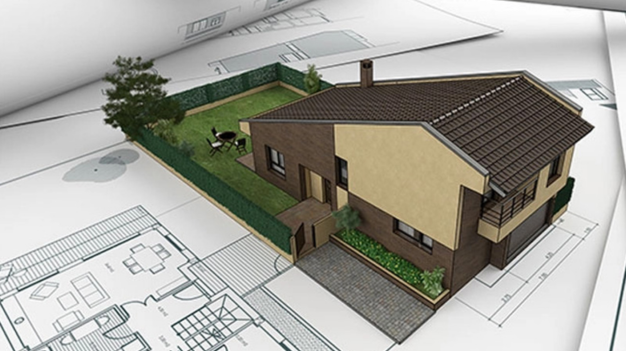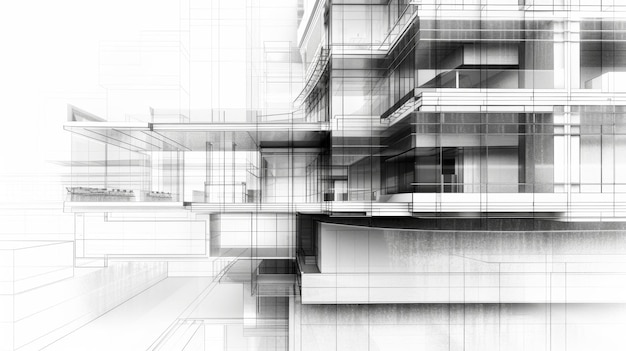When it comes to architectural design, engineering, and construction (AEC), two powerful tools are frequently mentioned—Revit and AutoCAD. Both tools are highly popular, but they serve different purposes and are suited to different kinds of projects. In this comprehensive guide, we’ll explore the key differences between Revit and AutoCAD, helping you determine which one is the best fit for your next project.
What is Revit?

Revit is a Building Information Modeling (BIM) software developed by Autodesk, specifically designed for architects, engineers, and construction professionals. Unlike traditional CAD software, Revit allows for 3D architectural modeling that integrates structural engineering, mechanical, electrical, and plumbing (MEP) elements into a single, collaborative platform.
The power of Revit lies in its ability to generate accurate, data-driven models that automatically update when changes are made to any component of the building. This parametric design ensures that all views (floor plans, sections, elevations) are synchronized, making Revit particularly useful for large-scale and collaborative projects.
What is AutoCAD?

AutoCAD, also developed by Autodesk, is the industry-standard CAD software used for 2D drafting and 3D modeling. While AutoCAD can handle 3D models, it is predominantly used for creating highly detailed, precise 2D technical drawings. AutoCAD has been the go-to tool for architects, engineers, and designers for decades, offering versatility across a variety of industries, including architecture, interior design, mechanical engineering, and more.
Although AutoCAD lacks the BIM functionality of Revit, it excels in creating 2D drawings, floor plans, and schematics with unparalleled precision.
Key Differences Between Revit and AutoCAD
Let’s break down the major differences between Revit and AutoCAD that can help you decide which software best suits your needs:
1. 3D Modeling vs. 2D Drafting
Revit: Revit is primarily focused on 3D modeling, allowing you to create dynamic, detailed, and data-rich models. With its parametric capabilities, changes made to any element in the model are automatically updated across all views, ensuring accuracy and reducing errors.
AutoCAD: AutoCAD, while capable of 3D modeling, is primarily a 2D drafting tool. Unlike Revit, any changes in AutoCAD often require manual updates across different views, making it less efficient for projects that require frequent revisions.
2. Building Information Modeling (BIM)
Revit: Revit is a BIM software designed to create and manage building data throughout the project lifecycle. It allows for collaborative workflows, where multiple disciplines (architecture, structure, MEP) work within the same integrated model, ensuring that all team members are on the same page.
AutoCAD: AutoCAD lacks true BIM functionality. While it can generate 2D drawings and some 3D models, it doesn’t have the integrated data management, collaboration, or automatic updating features that Revit offers.
3. Collaboration and Coordination
Revit: One of Revit’s most powerful features is worksharing. Multiple users can simultaneously work on the same project file, ensuring that all changes are instantly reflected across the project. This level of collaboration is especially useful for large teams working on complex, multi-disciplinary projects.
AutoCAD: AutoCAD files are generally handled individually, with users manually managing file versions. While AutoCAD offers cloud-based collaboration tools (AutoCAD Web), it does not provide the seamless collaboration features found in Revit.
4. Data Integration and Documentation
Revit: Revit uses intelligent objects that link to specific data. This allows for automatic generation of schedules, material takeoffs, and cost estimates, saving time on documentation tasks. The integration of data helps streamline the documentation process and improve accuracy.
AutoCAD: AutoCAD is a drafting tool without embedded data integration. Users can input data manually into the drawings, but it doesn’t automatically generate or manage data as Revit does.
5. Learning Curve and Ease of Use
Revit: Due to its advanced features and BIM capabilities, Revit has a steeper learning curve. However, once mastered, it can significantly enhance project efficiency and collaboration in larger, more complex projects.
AutoCAD: AutoCAD is more user-friendly and has a relatively flatter learning curve, especially for beginners who are primarily involved in 2D drafting. It’s an ideal tool for smaller projects or users who require precision drafting without the complexities of BIM.
When to Choose Revit vs. AutoCAD
The choice between Revit and AutoCAD depends largely on the type and scope of your project. Here are some guidelines:
Choose Revit if:
You are working on large-scale projects that require collaboration across multiple disciplines (e.g., architecture, structural engineering, MEP).
You need to create 3D models with data integration for accurate documentation.
You need to improve project efficiency by minimizing errors through real-time updates.
Choose AutoCAD if:
You are focused on 2D drafting or simple 3D modeling.
You need a cost-effective, easy-to-learn tool for precise drawings.
Your project does not require the full BIM capabilities of Revit, such as smaller mechanical or electrical designs.
Steelarch Designers: Experts in Revit and AutoCAD
At Steelarch Designers, we specialize in helping clients choose and implement the right software for their project needs. Whether you need the advanced BIM capabilities of Revit or the precise drafting features of AutoCAD, our team can help you integrate these powerful tools into your workflow.
With years of experience in both Revit and AutoCAD, we ensure that your project is completed efficiently, accurately, and to the highest standards.
Contact Steelarch Designers today to discuss your design needs, and let us guide you in selecting the right tool for your project.
Conclusion
Choosing between Revit and AutoCAD depends on your project’s requirements. Revit is ideal for large, data-driven, collaborative projects, while AutoCAD is a great option for precision drafting and smaller-scale projects. Understanding these differences will help you make an informed decision about the best tool for your needs.
Know More : https://www.steelarchdesigners.com/blog/revit-vs-autocad-choosing-the-right-tool.php

